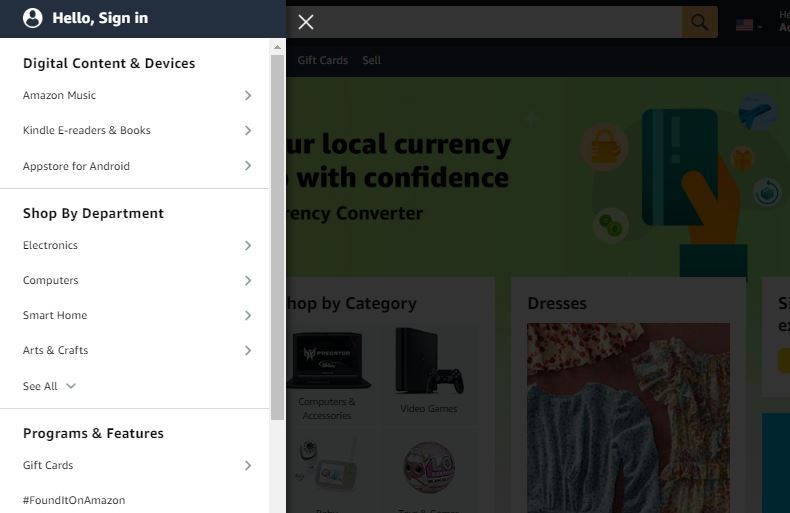Blogging is one of the most popular ways to make money online, which is good and bad at the same time.
Good, because there’s a lot of potential in this industry; bad because you are not the only one trying to get your foot into the door.
Plus, you want to steer away from competing with the big guns too.
So, you need to get a detailed answer to the question, “How to find micro niche ideas” in order to get on the right track right off the bat.
In this guide, I will show you how to find the best micro niche ideas for your new blog.
Plus, we will provide a detailed list of profitable micro-niches in blogging.
Let’s talk business.
What is a Micro-Niche?

A micro-niche is a smaller niche within a larger market. It has a more specific target audience than the main market.
For example, the main market for fitness could be “weight loss.” But a micro-niche within that could be “weight loss for women over 40.”
The benefit of targeting a micro-niche is that it’s easier to rank in Google and you can target a more focused customer persona.
Plus, there’s less competition in a micro-niche than in the main market.
What is a Macro-Niche?
A macro-niche is the opposite of a micro-niche. It’s a larger market with less specific target audiences.
For example, the macro-niche for fitness could be “fitness.” But a micro-niche within that could be “yoga.”
The benefit of targeting a macro-niche is that there are more people to sell to.
But the downside is that it’s harder to rank in Google and you’ll have more competition.
How to Find Micro Niche Ideas
The blogging landscape has changed a lot in the last few years.
A few years back, there were only a handful of blogs in most niches.
Now, tons of new blogs pop up every day.
So, the competition is stiffer than ever before.
In order to succeed as a blogger, you need to find a way to stand out from the crowd.
One of the best ways to do this is by catering to a specific audience – aka finding your micro-niche.
A micro niche is simply a smaller sub-niche within your larger niche.
For example, let’s say you’re in the fitness niche.
Your micro-niche could be plant-based fitness, vegan bodybuilding, or something else along those lines.
The key is to find an audience that is passionate and willing to spend money on your content.
To do this, you need to know how to find micro niche ideas.
The best way to find micro niche ideas is to start with a broad topic that you’re interested in, and then narrow it down until you find a specific angle that you can target.
For example, if you’re interested in the health market, you could narrow it down to “weight loss,” and then further narrow it down to “weight loss for men over 40.”
Let’s dive a little deeper.
Look for gaps in the market
Chances are if you can think of it, someone else has too.
That’s why it’s important to look for gaps in the market that you can fill with your content.
Think about what topics are not being talked about enough in your niche and run with it.
You’ll be surprised at how quickly you can build an audience this way.
Find a problem and solve it

Another great way to find micro niche ideas is to look for problems that need solving in your niche.
Chances are, there are people out there who are struggling with the same issues you once faced.
By creating content that solves these problems, you’ll be able to quickly build a loyal following.
Plus, you’ll be able to charge premium prices for your products and services since you’ll be seen as an expert in your field.
Brainstorm with friends
If you’re having trouble coming up with micro-niche ideas on your own, try brainstorming with friends or fellow bloggers.
Two heads are better than one, after all.
You may be surprised at the great ideas that come out of these sessions.
Check out forums
Forums are a great way to get insights into what people are struggling within your niche.
Spend some time browsing through relevant forums and see if you can find any potential micro niche ideas.
To use forums to find micro-niche ideas, simply head over to Google and type in your main keyword + “forum”.
Just make sure not to copy anyone’s exact idea – you want to be unique!
Use keyword research tools
Keyword research is a must when it comes to finding micro niche ideas.
Tools like Google AdWords and Ubersuggest will help you uncover long-tail keywords that you can use to attract targeted traffic to your blog.
Remember, the more specific your keywords are, the easier it will be to rank in search engines.
Use Amazon to Find Micro-Niche Ideas

One of the best places to find micro-niche ideas is on Amazon.
The great thing about Amazon is that it’s a massive marketplace with thousands of products and niches.
Plus, you can easily see which products are selling well and which ones are not.
To get started, simply head over to Amazon and type in your main keyword.
For example, let’s say you’re in the fitness niche.
If you type in “fitness” into the Amazon search bar, you’ll be presented with a list of products and sub-niches to choose from.
From there, you can further narrow down your options until you find a micro-niche that you’re passionate about.
Another great thing about Amazon is that you can also find out what people are searching for.
To do this, simply head over to the Amazon Bestsellers page and take a look at the top 100 products in your niche.
You can then use these keywords to create content that targets these popular searches.
Use Google Trends to Find Micro-Niche Ideas
Google Trends is another great tool that you can use to find micro-niche ideas.
This tool allows you to see which topics are trending in your niche.
To use this tool, simply head over to Google Trends and type in your main keyword.
For example, let’s say you’re in the tech niche.
If you type in “tech” into the Google Trends search bar, you’ll be presented with a list of popular tech topics that people are searching for.
You can then use these topics to create in-demand content.
Use Social Media to Find Micro-Niche Ideas
Social media is a great place to find micro-niche ideas.
This is because you can easily see what people are talking about in your niche.
To use social media to find micro-niche ideas, simply head over to Twitter and type in your main keyword.
For example, let’s say you’re in the food niche.
If you type in “food” into the Twitter search bar, you’ll be presented with a list of popular tweets that contain your keyword.
You can then use these tweets to create content that targets these popular searches.
Use ClickBank to Find Micro Niche Ideas

ClickBank is another great place to find micro-niche ideas.
This is because ClickBank is a marketplace where people can buy and sell digital products.
To use ClickBank to find micro-niche ideas, simply head over to the ClickBank Marketplace and type in your main keyword.
For example, let’s say you’re in the health niche.
If you type in “health” into the ClickBank Marketplace search bar, you’ll be presented with a list of products and sub-niches to choose from.
From there, you can further narrow down your options until you find a suitable micro-niche.
Use Google AdWords to Find Micro Niche Ideas
Google AdWords allows you to see which keywords are being used in Google Ads.
To use this tool, just type in your main keyword.
For example, let’s say you’re in the marketing niche.
If you type in “marketing” into the Google AdWords search bar, you’ll be presented with a list of popular keywords that people are using in their ads.
You can then use these keywords to create content that targets these popular searches.
How to Validate a Micro-Niche Idea With Keyword Research?
Once you’ve found a micro-niche idea that you’re passionate about, the next step is to validate your idea with keyword research.
To do this, simply head over to Google Keyword Planner and type in your main keyword.
For example, let’s say you want to start a blog about “vegan recipes.”
If you type in “vegan recipes” into the Google Keyword Planner, you’ll be presented with a list of popular keywords.
Keyword Research
If you’re new to blogging, you might be wondering what keyword research is and why it’s important.
Simply put, keyword research is the process of finding and choosing keywords that you can use in your blog content in order to rank higher in search engines and attract more relevant traffic.
For example, let’s say you’re a fashion blogger.
You might use keyword research to find out what people are searching for when they’re looking for fashion advice.
Armed with this information, you can then optimize your blog content around those keywords in order to rank higher in search engine results pages (SERPs).
In other words, keyword research helps you figure out what people are actually searching for online.
How to Do Keyword Research for Free?
Anyone who has ever tried to do keyword research knows that it can be a time-consuming and expensive process.
There are a number of paid tools that offer keyword suggestions, but for those on a tight budget, it can be difficult to justify the cost. Fortunately, there are a number of ways to do keyword research for free.
One of the most effective is to use Google’s Keyword Planner. This tool provides data on how often certain keywords are searched for, as well as how much competition there is for those keywords.
Another option is to use Amazon’s search suggested terms feature. Simply type in a few relevant keywords and Amazon will provide a list of related terms that people are searching for. Finally, don’t forget about the good old Google search.


